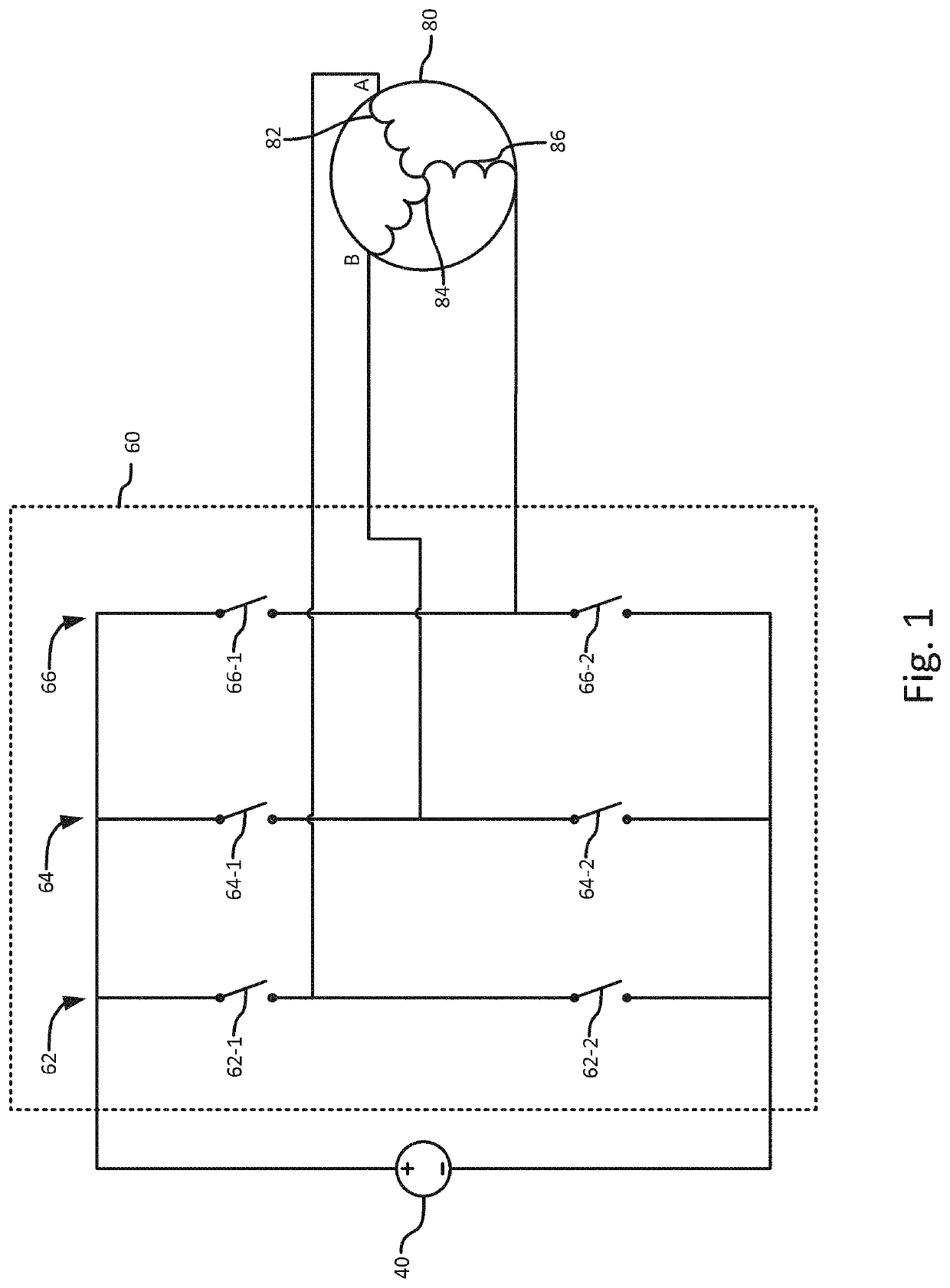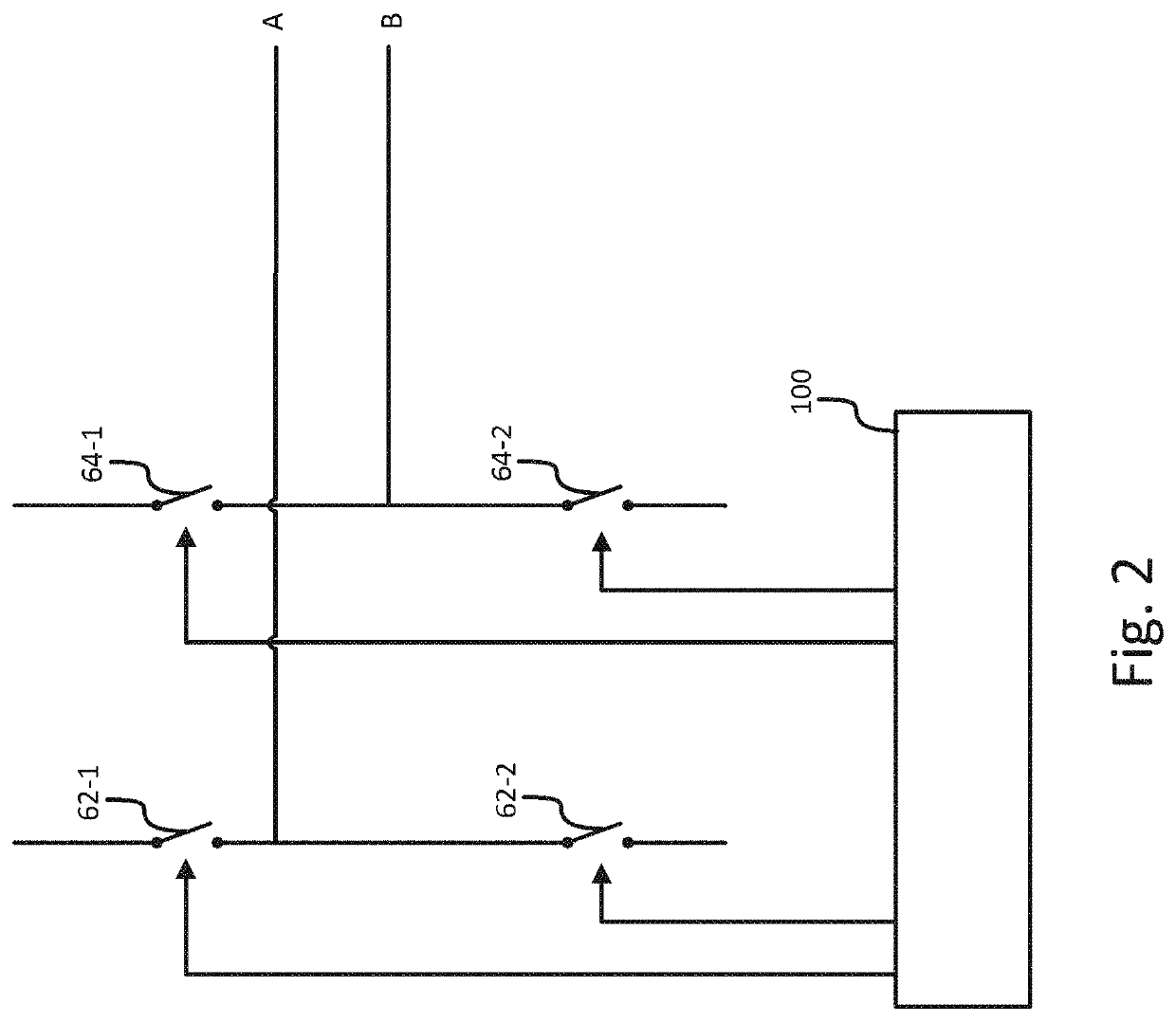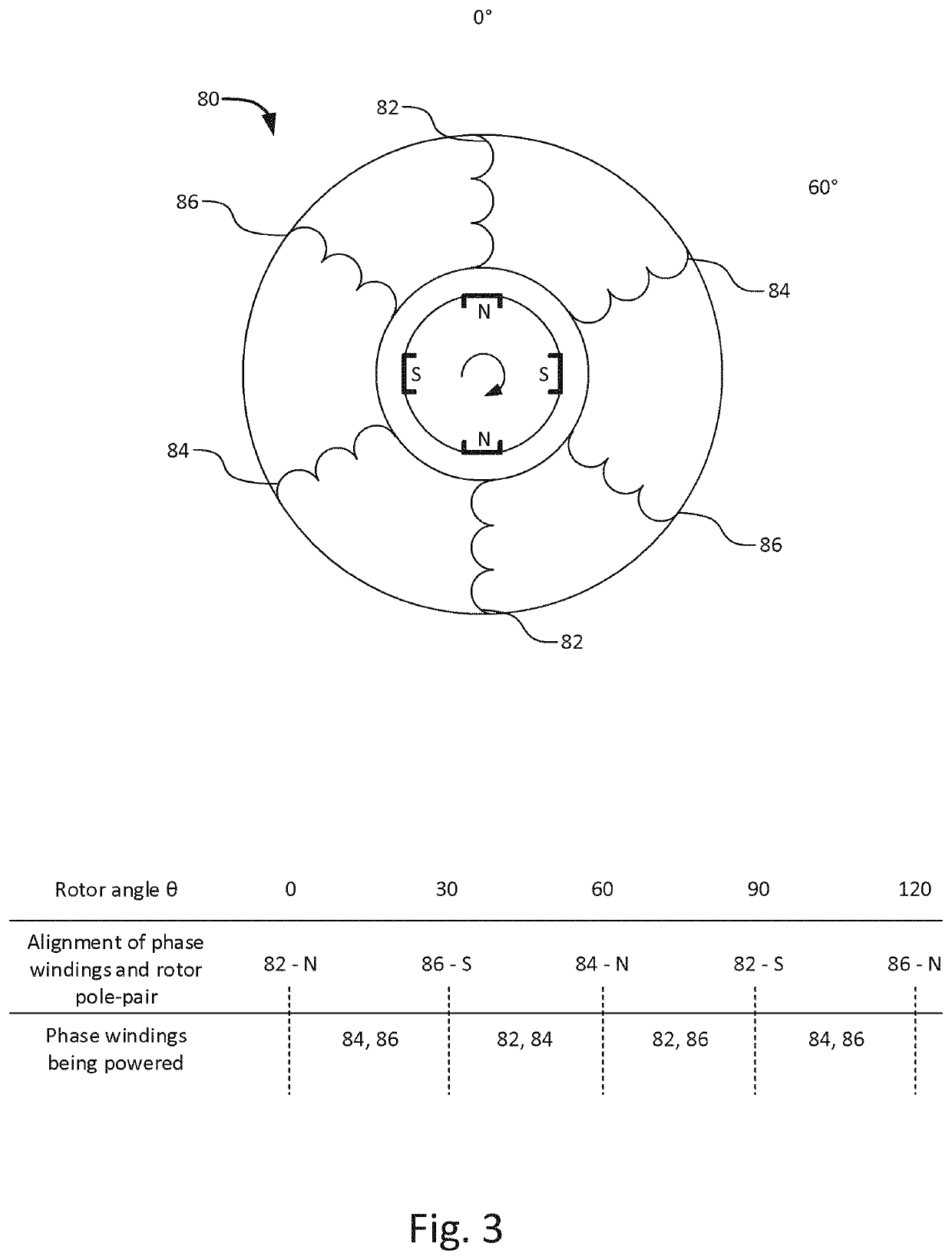Semi-symmetric switching
a switching element and semi-symmetric technology, applied in the direction of electronic commutation motor control, electric/dynamo-electric converter control, electric/dynamo-electric converter starters, etc., can solve the problems of switching elements driven by pwm signals to be excessively affected, switching elements to deteriorate at different rates, and different in their performan
- Summary
- Abstract
- Description
- Claims
- Application Information
AI Technical Summary
Benefits of technology
Problems solved by technology
Method used
Image
Examples
embodiment 1
[0101]FIG. 4 shows the control signals C1 and C2 generated by the controller 100 for controlling switching elements to be alternately switched, according to an embodiment.
[0102]In the present embodiment, switching elements are metal-oxide FETs, MOSFETs, and the controller 100 is electrically coupled to the gate electrode of each MOSFET. Controller 100 generates control signal C1 for controlling MOSFET 62-1 and control signal C2 is for controlling MOSFET 64-2.
[0103]Referring back to FIG. 3, these control signals may, for example, be generated while the rotor angle is between 30° and 60°, and phase windings 82 and 84 are powered. Controller 100 also generates control signals for controlling the remaining switching elements of the driver circuit 60, but the representation of these control signals is omitted for simplicity.
[0104]FIG. 4 also shows the voltage Vab obtained between points A and B in the phase windings of the motor 80, based on the state of MOSFETs 62-1 and 64-2.
[0105]In th...
embodiment 2
[0115]FIG. 5 shows control signals C1 and C2 generated by the controller 100 for controlling switching elements 62-1 and 64-2 so as to alternately switch switching elements 62-1 and 64-2 during the same switching period, according to an embodiment.
[0116]More specifically, switching elements 62-1 and 64-2 are turned ON during a commutation period of the motor
[0117]FIG. 5 also shows the voltage Vab obtained between points A and B in the phase windings of the motor 80.
[0118]For example, switching element 62-1 is turned ON at the start of a switching period Ts1 and switching element 64-2 is turned OFF near a central point of switching period Ts1. Then, switching element 64-2 is turned ON at the start point of the switching period Ts2 following Ts1, and switching element 62-1 is turned OFF near a central point of switching period Ts2.
[0119]The control signals C1 and C2 allow for a pulsing voltage Vab to be obtained, each pulse of voltage Vab being between a rising edge of one of the cont...
embodiment 3
[0129]Referring now to FIGS. 7a to 7c, an embodiment will be described.
[0130]FIG. 7a shows a controller 200 and two switching element pairs 62 and 64 of driver circuit 60.
[0131]In the present embodiment, driver circuit 260 includes MOSFETs as switching elements. MOSFETs 262-1 and 62-2 of the first MOSFET pair 262, and MOSFET 264-2 of the second MOSFET pair 264 are each provided with a sensor 202-1 to 202-3, to obtain information indicating a state of the corresponding MOSFET.
[0132]In this embodiment, sensor 202-1 and 202-2 are arranged to obtain information indicating a temperature of MOSFET 262-1 and 264-2, respectively.
[0133]The controller 200 is arranged to obtain information indicating a state of an MOSFET from at least one of sensors 202-1 or 202-2.
[0134]Based on the obtained information, the controller 200 may determine that one of MOSFET 262-1 and MOSFET 264-2 is affected by the switching distinctively more than the other switching element. The controller may determine to swi...
PUM
 Login to View More
Login to View More Abstract
Description
Claims
Application Information
 Login to View More
Login to View More - R&D
- Intellectual Property
- Life Sciences
- Materials
- Tech Scout
- Unparalleled Data Quality
- Higher Quality Content
- 60% Fewer Hallucinations
Browse by: Latest US Patents, China's latest patents, Technical Efficacy Thesaurus, Application Domain, Technology Topic, Popular Technical Reports.
© 2025 PatSnap. All rights reserved.Legal|Privacy policy|Modern Slavery Act Transparency Statement|Sitemap|About US| Contact US: help@patsnap.com



